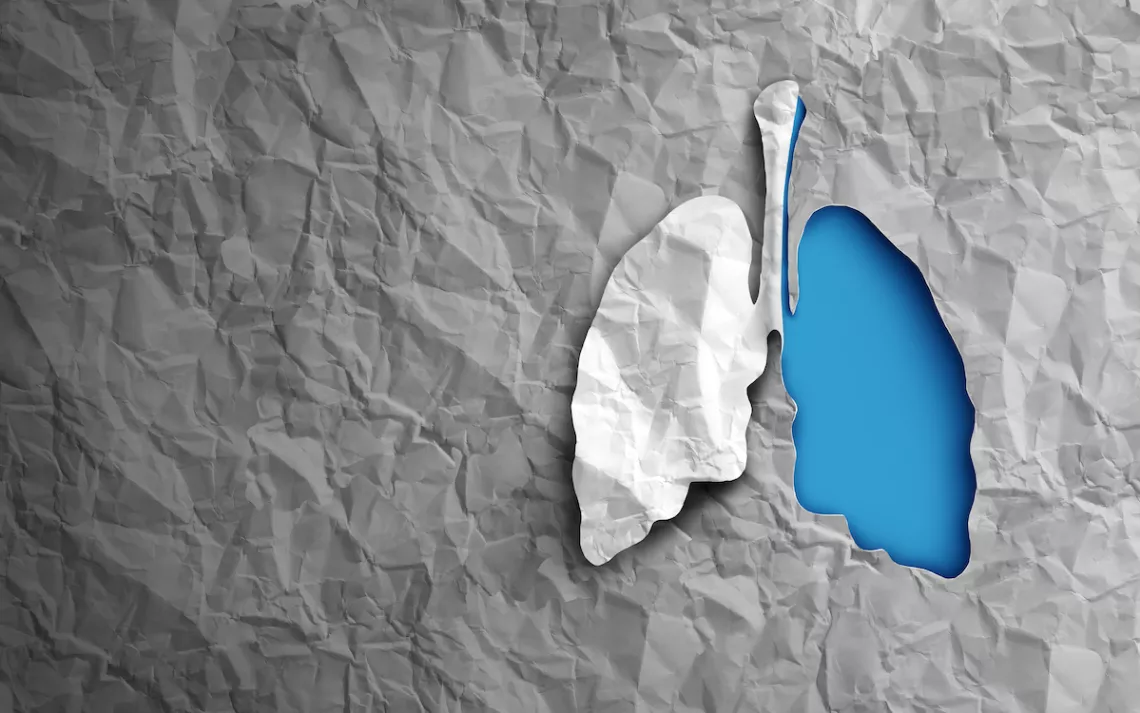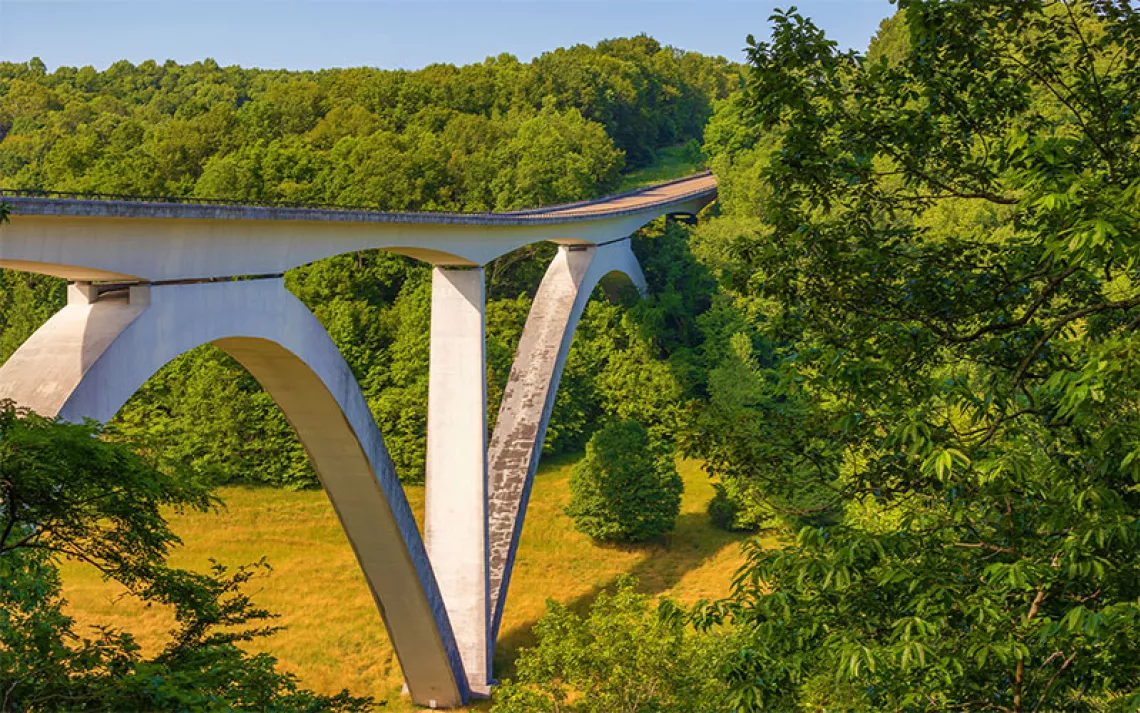Millions Breathe Dirty Air as Climate Change Makes Air Quality Worse
People of color are 3x more likely to live in the most polluted counties

Photo by wildpixel/iStock
During a congressional hearing last week with Dr. Anthony Fauci, Representative Jim Jordan (R-OH), one of the most zealous supporters of former president Donald Trump, sought to frame COVID-19 health measures as a matter of big government versus individual freedom. As new strains of the deadly respiratory disease continue to circulate the globe, Jordan blasted Fauci for taking away our freedom to breathe without a mask on.
“Are we just going to continue this forever? When do we get to the point, what measure, what standard, what objective outcome do we have to reach before Americans get their liberties and freedom back?” Jordan said.
“You’re indicating liberty and freedom,” Fauci, the White House's chief medical adviser, replied. “I look at it as a public health measure to prevent people from dying and going to the hospital.”
Among the liberties of which Jordan purported to be a champion, he never mentioned the freedom to breathe clean air. He might want to take up the cause: According to the American Lung Association’s latest State of the Air report, that freedom is increasingly being taken away from millions of Americans nationwide, in particular people of color—and not by Dr. Anthony Fauci.
Global warming is amplifying a public health emergency that is playing out in the very air we breathe. According to the new report, more than four in 10 people in the United States, or 135 million—approximately the same amount of people who have now received at least one dose of the coronavirus vaccine—are breathing polluted air, leading to a broad spectrum of health impacts from which more are dying and going to the hospital. And the situation is getting worse as the planet gets hotter. The new report studies data compiled in 2017, 2018, and 2019—three of the six hottest years ever recorded. While the data does not cover the pandemic year, it reveals a nation in the grip of a separate and ongoing health crisis that rarely attracts the kind of passion and engagement those opposed to COVID-19 health measures frequently put on public display.
When that data is examined by demographic or income level, a grim statistic emerges: The freedom to breathe clean air is increasingly enjoyed by the most privileged. People of color were 61 percent more likely to live in a county with unhealthy air than white people, and three times more likely to live in a county that failed all three air quality grades: ozone, annual PM 2.5 (fine particle pollution), and short-term PM 2.5. Of the over 20 million people who live in 13 counties that failed all three measures, 14 million were people of color. Nearly 2.8 million people in poverty live in counties that fail all three measures.
Yet State of the Air poses a kind of paradox too: The new findings seem to suggest that little progress is being made to clean up air quality, but that’s not exactly the case. Over the past 20 years, the nation’s legacy inputs of air pollution—from coal-fired power plants to combustion engines—have increasingly been replaced by cleaner, renewable sources of energy like solar, wind, and electric vehicles, leading to gains for cleaner air. And data continues to show that federal statutes designed to reduce air pollution such as the Clean Air Act are working.
“Thanks to the Clean Air Act, we’ve seen a long steady decline in pollution levels until the last several years,” Paul Billings, the national senior vice president for public policy at the American Lung Association, told Sierra. “Cars and trucks are much cleaner today than they were a decade ago. Our electric-generating grid is much cleaner. There are far fewer coal-fired power plants on the grid than there were seven or eight years ago. But we’re seeing these higher levels of pollution. What’s different?”
“The main thing that’s different is climate change,” Billings said. “We had four years of an administration that didn’t want to enforce the Clean Air Act, and compliance lagged during that time. But the big driver was the changing climate: hotter weather driving more days with conditions that are conducive to higher ozone levels, and the impact of wildfire that is driven by the drought from global warming.”
Exposure to air pollution—whether it’s a short-term daily spike of fine particle pollution or breathing dirty air day in and day out on an annual basis—can trigger a wide variety of health effects, including coughing, wheezing, shortness of breath, stroke, cardiovascular disease, heart attacks, asthma attacks, and exacerbation of chronic obstructive pulmonary disease. Particle pollution is responsible for approximately 50,000 premature deaths in the United States every year.
There is also a link between air pollution and an increased chance of death from COVID-19. Last year, a study by the Data Science Initiative at Harvard University showed that long-term exposure to the fine particulate matter in air pollution increases the risk of death from COVID-19 by 11 percent.
Those facts are a lived reality for people in the western United States, who are breathing the dirtiest air in the nation, according to the report. Of the report’s top 10 cities most polluted by year-round particle pollution, all except for one were in the West, with more than half located in California alone. Bakersfield once again topped the list as the most polluted city. Only Pittsburgh-New Castle-Weirton (PA-Ohio-WV)— Jim Jordan’s backyard—was from the East.
Of the top 25 most polluted cities for 24-hour particle pollution, 23 were in the West, with Fairbanks, Alaska, topping the list as the most polluted city. Only Pittsburgh, at #16, and Lancaster, Pennsylvania, at #24, were in the East. Fresno, Bakersfield, and San Jose-San Francisco-Oakland were all in the top five cities most polluted by 24-hour pollution.
Los Angeles-Long Beach once again claimed the #1 spot as the city most polluted by ozone, the main ingredient in smog—a ranking it has claimed for 21 of the 22 years the American Lung Association has produced the State of the Air report. Black and brown communities throughout Los Angeles bear the biggest burden, as they are often situated near the city’s sprawling matrix of ports, highways, freight hubs, power plants, and refineries. To the north, Bakersfield was right behind L.A., ranking #2 for the most ozone pollution. Seven of the 10 cities most polluted by ozone were all in California, with rising heat in part to blame for the increase in high ozone days.
“Unfortunately, when you’re seeing the impacts of climate, combined with the other factors in California, you’re seeing high levels of ozone, high levels of daily particle pollution, and spikes of particle pollution, all of which means people’s health is being harmed,” Billings said.
There is perhaps no better example than California of how gains for clean air at the state level are being undone by global warming. Arguably no state has done more to clean the air than California, which has long been a global leader in controlling air pollution. Motor vehicles are much cleaner today in large part because of the decades of leadership by the state in pushing for clean car standards and robust pollution control requirements. Yet, because of the unique characteristics of California—the position of the mountains, the prevailing winds, and the huge population—combined with consecutive years of drought and historic wildfire seasons fueled by a warming climate, residents of the state continue to breathe the most polluted air in the country.
The report showed that 1.1 million more people are living in communities that had dangerous particle pollution spikes compared with last year’s report. Many cities reached their highest number of days ever with unhealthy levels of particle pollution. The historic wildfire seasons hitting the West were in part to blame. In 2017, over 9,000 wildfires including the monster Tubbs and Thomas Fires blitzed the state of California alone, incinerating 1.2 million acres, an area the size of Delaware. Those record statistics were soon supplanted in 2018, the deadliest wildfire season in California history: Over 7,500 fires burned nearly 2 million acres across the state, destroying approximately 25,000 structures with 100 confirmed fatalities. In 2019, the Kincaid Fire burned nearly 80,000 acres alone. By year’s end, nearly 8,000 wildfires burned over 250,000 acres.
Eastern states were not immune from the toxic smoke and ash those wildfires dumped across much of the West. The prevailing winds run from coast to coast, circulating smoke and ash for thousands of miles, with a far-ranging impact to the health of the people exposed to it. For example, Fairfield County, Connecticut, was the county with the highest ozone in the eastern half of the nation in part because of pollution transported there from other states.
“Everyone is downwind of somebody else,” Billings said.
The State of the Air report compiles data on air quality throughout the United States from the EPA’s Air Quality System database. But the report is just a snapshot, not the whole picture, of where air pollution is the worst and how many people are exposed to it, which reveals an altogether different problem. Of the over 3,000 counties in the United States, only 900 have EPA air quality monitors. That means data on air pollution levels is not available for approximately 2,100 counties throughout the nation, and therefore not included in the State of the Air report.
The American Lung Association is calling for a comprehensive and robust approach to address air pollution from every level of government, including investments that favor cleaner, more renewable sources of energy in underserved communities, added incentives for zero-emission vehicles, and additional monitors so that air quality can be measured in more counties nationwide.
“We need to address the pandemic,” Billings said, “but we also have to address air pollution, which is killing tens of thousands of people every year. We can’t truly have a healthy nation until we protect the public from pollution.”
The World Meteorological Organization also released its flagship State of the Global Climate report this week, and the news was sobering. The study shows the planet is on a runaway train toward climate crisis. The global average temperature in 2020 reached 1.2 degrees Celsius above pre-industrial levels—just a few ticks off the Paris Agreement goal of holding global warming at 1.5 degrees to stave off the worst climate scenario. The report showed that in 2019—the final year studied in the American Lung Association's State of the Air—greenhouse gas concentrations reached new all-time highs: Carbon dioxide reached 148 percent of preindustrial levels, methane 260 percent, and nitrous oxide 123 percent.
“We live in a triple crisis: a climate crisis, a biodiversity crisis, and a pollution crisis," United Nations secretary-general António Guterres said at a press conference announcing the findings. "If we don't act immediately, we are on the verge of the abyss.”
 The Magazine of The Sierra Club
The Magazine of The Sierra Club



